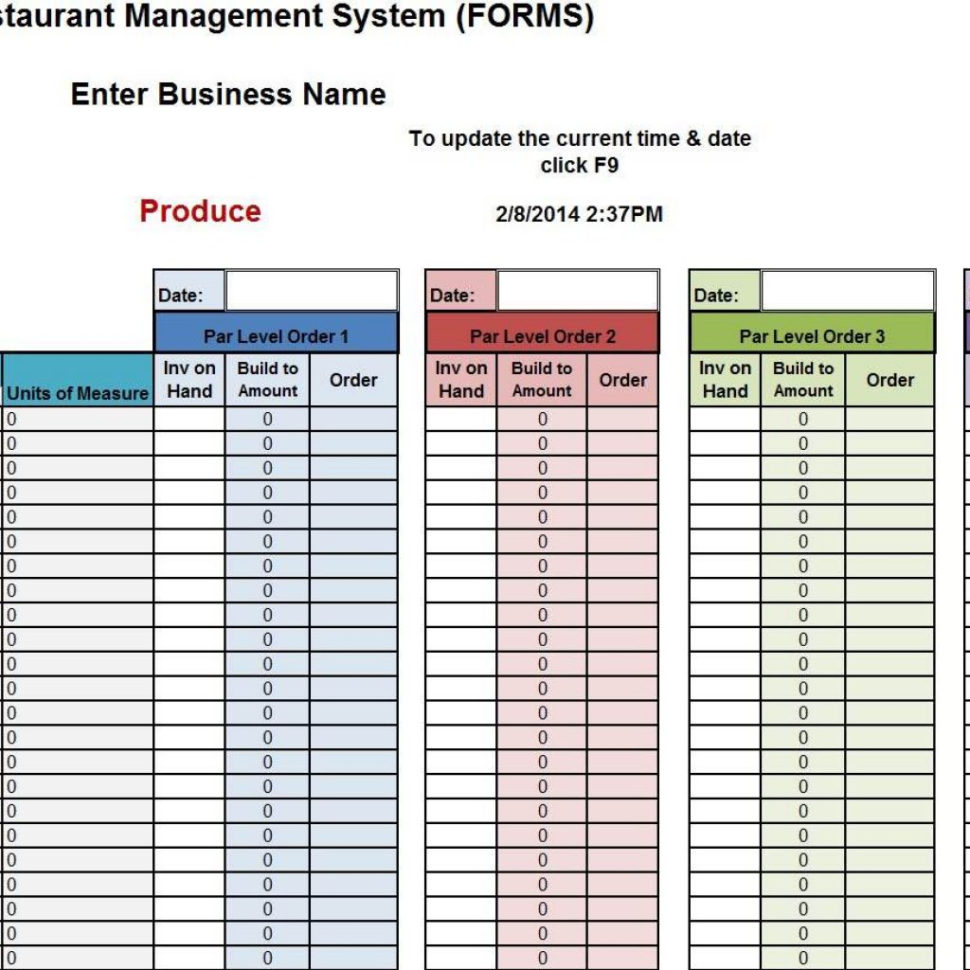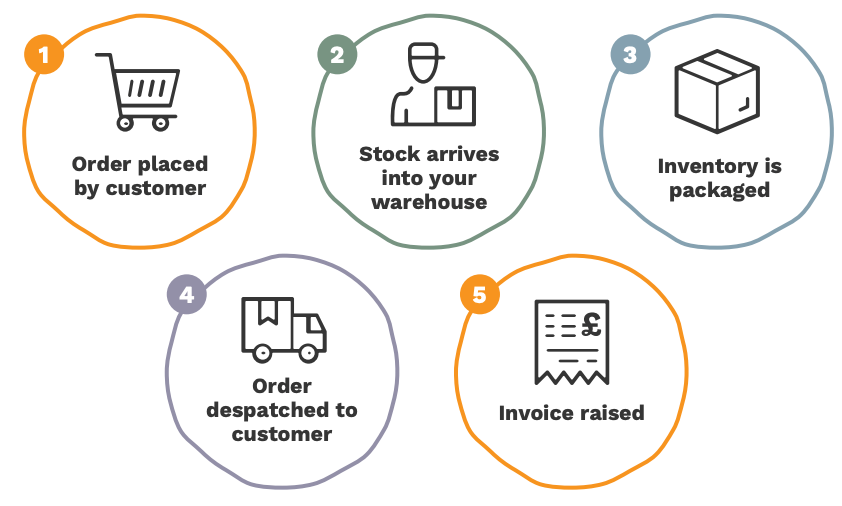Delve into the realm of business inventory ordering, a critical aspect of supply chain management that empowers businesses to optimize their operations, minimize costs, and enhance customer satisfaction. From understanding inventory management techniques to implementing effective inventory control systems, this comprehensive guide unravels the intricacies of inventory ordering, empowering you with the knowledge to drive efficiency and profitability.
In this guide, we’ll explore the Economic Order Quantity (EOQ) formula, the Just-in-Time (JIT) inventory system, and the benefits of inventory management software. We’ll delve into inventory forecasting methods, including the Moving Average and Exponential Smoothing techniques, and uncover the role of machine learning in demand prediction.
Additionally, we’ll shed light on inventory optimization strategies, safety stock calculations, and the advantages of safety stock buffers. We’ll also examine inventory replenishment models, such as the Continuous Review and Periodic Review models, and introduce inventory control systems, their components, and their significance in supply chain management.
Inventory Forecasting Methods

Inventory forecasting is crucial for businesses to maintain optimal stock levels, avoid stockouts, and minimize holding costs. Various methods exist to forecast demand, each with its advantages and limitations.
The Moving Average method calculates the average demand over a specific period, such as the last 3, 6, or 12 months. It is a simple and commonly used method that can smooth out fluctuations in demand.
Exponential Smoothing Method
Exponential smoothing assigns greater weight to more recent data, making it more responsive to demand changes. It involves using a smoothing constant (alpha) between 0 and 1 to calculate a weighted average of past demand and the previous forecast.
- Simple Exponential Smoothing:Uses a constant alpha for all periods.
- Holt’s Linear Trend:Incorporates a trend component to account for gradual changes in demand.
- Holt-Winters Seasonal:Considers seasonal variations in demand by using a seasonal index.
Machine Learning in Inventory Forecasting
Machine learning algorithms can analyze historical data and identify patterns to improve forecast accuracy. These algorithms include:
- Regression Analysis:Models the relationship between demand and independent variables such as price, seasonality, and promotions.
- Time Series Analysis:Uses statistical methods to identify trends and patterns in historical demand data.
- Artificial Neural Networks:Complex algorithms that can learn complex relationships between demand and multiple factors.
Machine learning can enhance forecasting accuracy by capturing non-linear relationships and handling large datasets, making it a valuable tool for businesses seeking to optimize their inventory management.
Inventory Optimization Strategies

Inventory optimization strategies aim to maintain optimal inventory levels to meet customer demand while minimizing costs. Safety stock and ABC analysis are two key techniques used in inventory optimization.
Safety Stock, Business inventory ordering
Safety stock is an additional inventory held to buffer against unexpected fluctuations in demand or supply. It helps prevent stockouts and ensures a consistent supply of products to customers.Calculating Safety Stock:
- Determine the average daily demand.
- Estimate the lead time to replenish inventory.
Calculate the safety stock using the formula
Safety Stock = (Average Daily Demand x Lead Time) + (Safety Factor x Standard Deviation of Demand).
The safety factor is a buffer to account for uncertainties, typically ranging from 1 to 3.
Benefits of Safety Stock
- Reduced risk of stockouts.
- Improved customer satisfaction.
- Lower costs associated with stockouts, such as lost sales and expedited shipping.
- Enhanced supply chain resilience.
ABC Analysis
ABC analysis is a technique used to categorize inventory items based on their importance and value. It helps businesses focus their efforts on optimizing the most critical items.
Group items into three categories
A-items
High-value items with low demand variability.
B-items
Medium-value items with moderate demand variability.
C-items
Low-value items with high demand variability.
Implement different inventory management strategies for each category, such as
A-items
Strict inventory control with frequent monitoring.
B-items
Moderate inventory control with regular monitoring.
C-items
Minimal inventory control with infrequent monitoring.ABC analysis enables businesses to prioritize their inventory management efforts and reduce overall inventory costs.
Inventory Replenishment Models

Inventory replenishment models guide businesses in determining when and how much inventory to order to meet customer demand while minimizing costs. Two primary models are Continuous Review and Periodic Review.
Continuous Review Model
The Continuous Review model monitors inventory levels continuously and triggers an order when inventory falls below a predefined reorder point (ROP). Assumptions of this model include:
- Demand is constant and known.
- Lead time is fixed and known.
- Ordering cost is constant.
- Holding cost is constant.
Periodic Review Model
The Periodic Review model reviews inventory levels at fixed intervals (e.g., weekly, monthly) and places an order to bring inventory up to a target level. Advantages of this model include:
- Lower administrative costs than Continuous Review.
- Can take advantage of quantity discounts.
- Provides a more accurate representation of inventory levels at the time of review.
Inventory Replenishment Policies
Inventory replenishment policies specify how much inventory to order when the reorder point is reached. Common policies include:
- Min-Max Policy:Orders enough inventory to bring inventory up to a maximum level when the reorder point is reached.
Inventory Control Systems
Inventory control systems are designed to help businesses manage their inventory levels efficiently and effectively. They provide real-time visibility into inventory levels, allowing businesses to make informed decisions about ordering, production, and distribution.Inventory control systems typically consist of the following components:
Inventory management software
This software tracks inventory levels, orders, and shipments. It can also generate reports and provide insights into inventory trends.
Barcodes or RFID tags
These tags are attached to inventory items and contain information about the item, such as its SKU, description, and quantity.
Scanning devices
These devices are used to scan barcodes or RFID tags and collect data about inventory levels.
Inventory control policies
These policies define how inventory is managed, such as when to order new inventory, how much to order, and where to store inventory.Inventory control plays a vital role in supply chain management. It helps businesses to:
Reduce inventory costs
By optimizing inventory levels, businesses can reduce the amount of money they spend on inventory.
Improve customer service
By ensuring that the right products are available at the right time, businesses can improve customer satisfaction.
Increase efficiency
By automating inventory management tasks, businesses can improve efficiency and free up time for other tasks.There are a number of different inventory control technologies available, such as:
RFID tags
RFID tags are small, wireless tags that can be attached to inventory items. They contain information about the item, such as its SKU, description, and quantity. RFID tags can be scanned by RFID readers to collect data about inventory levels.
Barcode scanners
Barcode scanners are used to scan barcodes that are attached to inventory items. Barcodes contain information about the item, such as its SKU, description, and quantity. Barcode scanners can collect data about inventory levels and send it to inventory management software.
Inventory management software
Inventory management software is used to track inventory levels, orders, and shipments. It can also generate reports and provide insights into inventory trends.By using inventory control systems, businesses can improve their inventory management practices and gain a competitive advantage.
End of Discussion: Business Inventory Ordering
By mastering business inventory ordering, you gain the power to streamline your supply chain, reduce waste, and improve customer responsiveness. Embrace the strategies and techniques Artikeld in this guide to optimize your inventory levels, enhance operational efficiency, and drive business growth.
Remember, effective inventory ordering is the key to unlocking supply chain excellence and achieving operational success.
General Inquiries
What is the Economic Order Quantity (EOQ)?
The Economic Order Quantity (EOQ) is an inventory management formula that determines the optimal quantity of inventory to order at a time to minimize total inventory costs, including ordering costs and holding costs.
What are the benefits of using a Just-in-Time (JIT) inventory system?
A Just-in-Time (JIT) inventory system reduces inventory holding costs, improves cash flow, and enhances customer responsiveness by receiving inventory only when needed for production or sales.
How can machine learning be used in inventory forecasting?
Machine learning algorithms can analyze historical demand data, identify patterns, and make predictions about future demand, improving the accuracy of inventory forecasting and reducing the risk of stockouts or overstocking.
What is the purpose of safety stock?
Safety stock is an additional amount of inventory held as a buffer to protect against unexpected fluctuations in demand or supply disruptions, ensuring that businesses can meet customer demand even in uncertain conditions.
What are the advantages of using inventory control systems?
Inventory control systems provide real-time visibility into inventory levels, automate inventory replenishment, and optimize inventory allocation, reducing the risk of stockouts, overstocking, and inventory shrinkage.